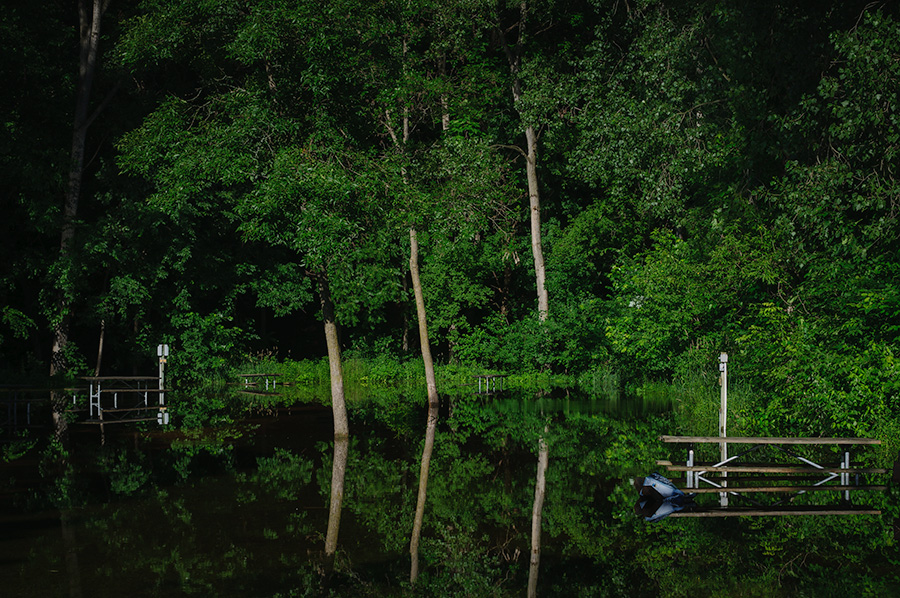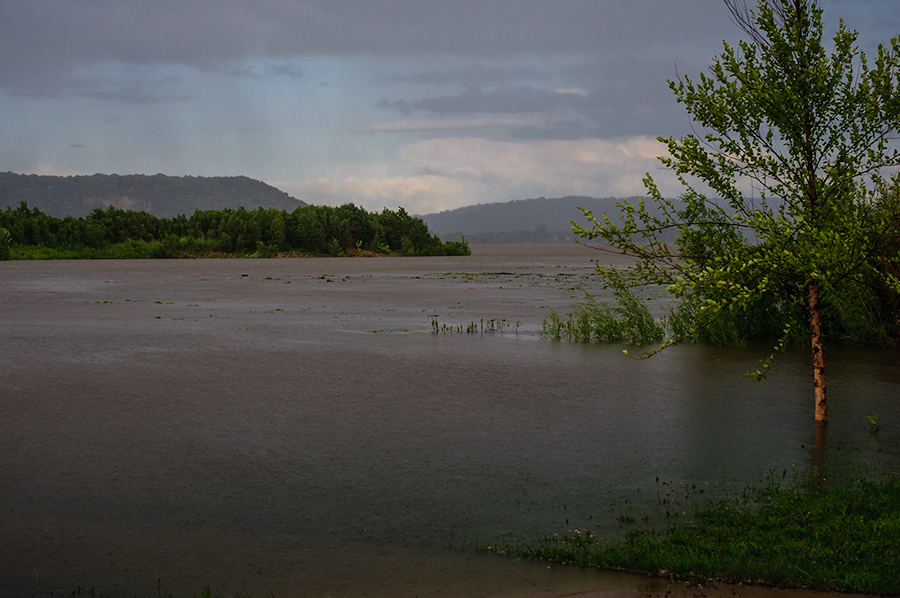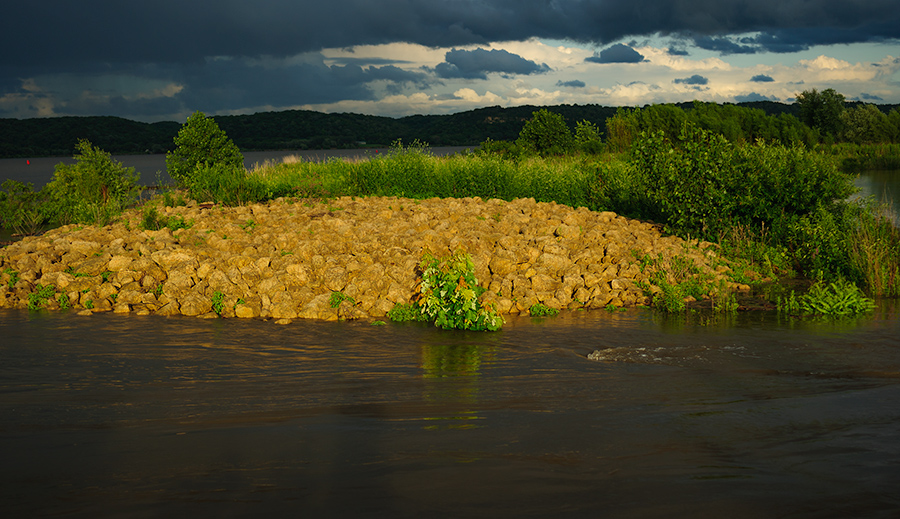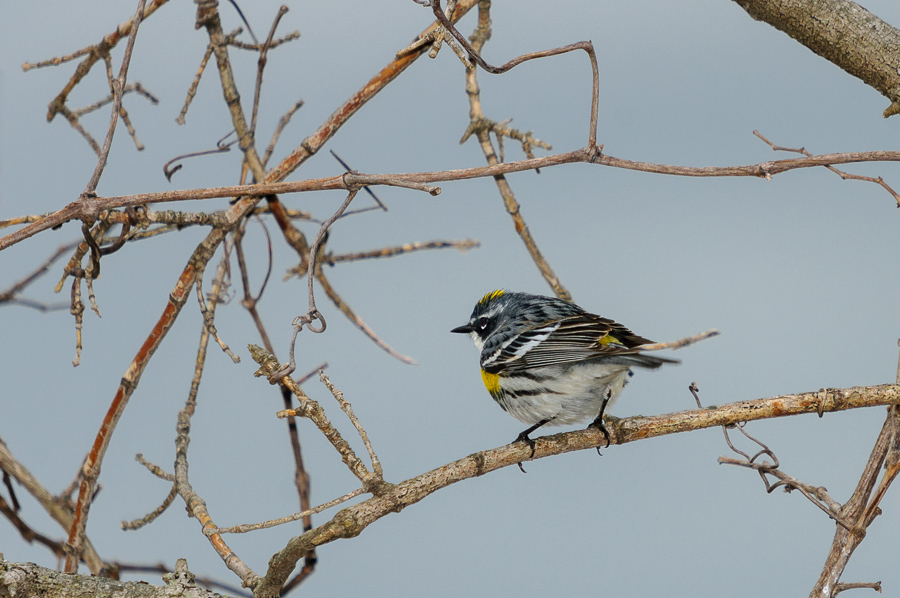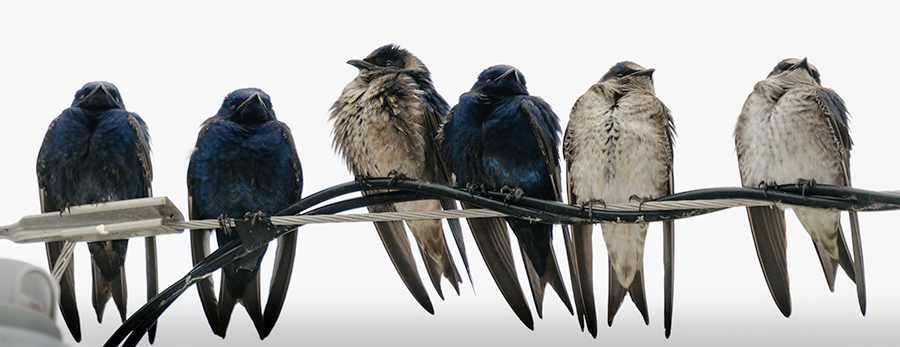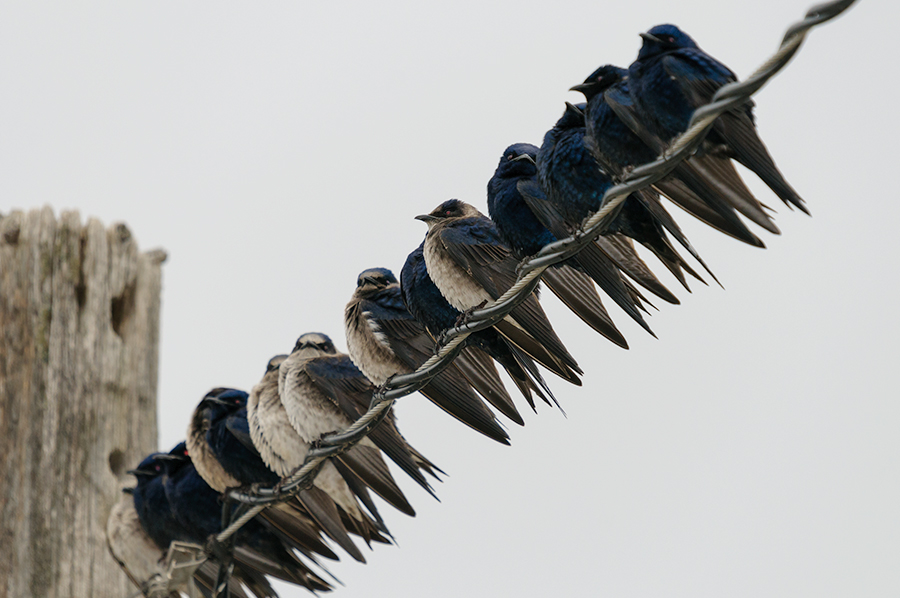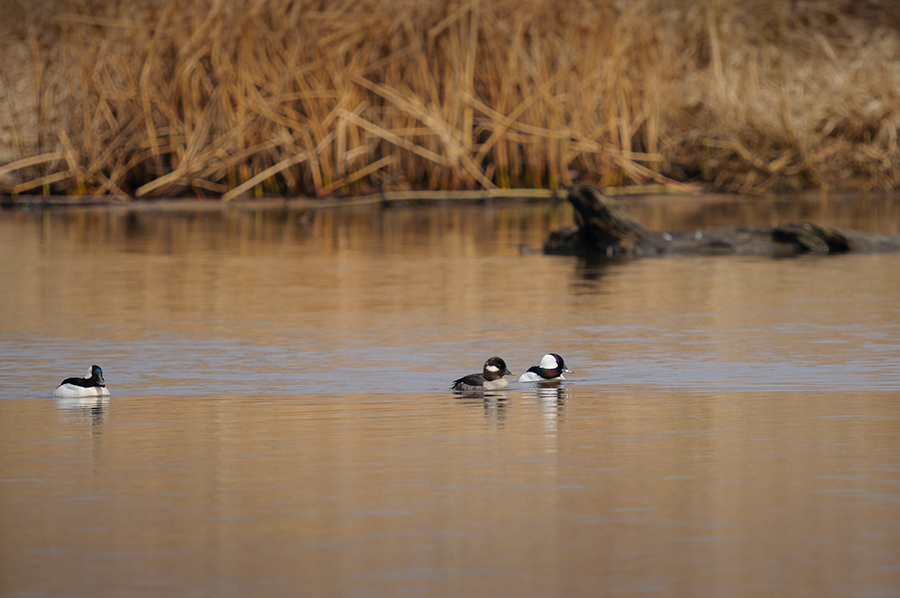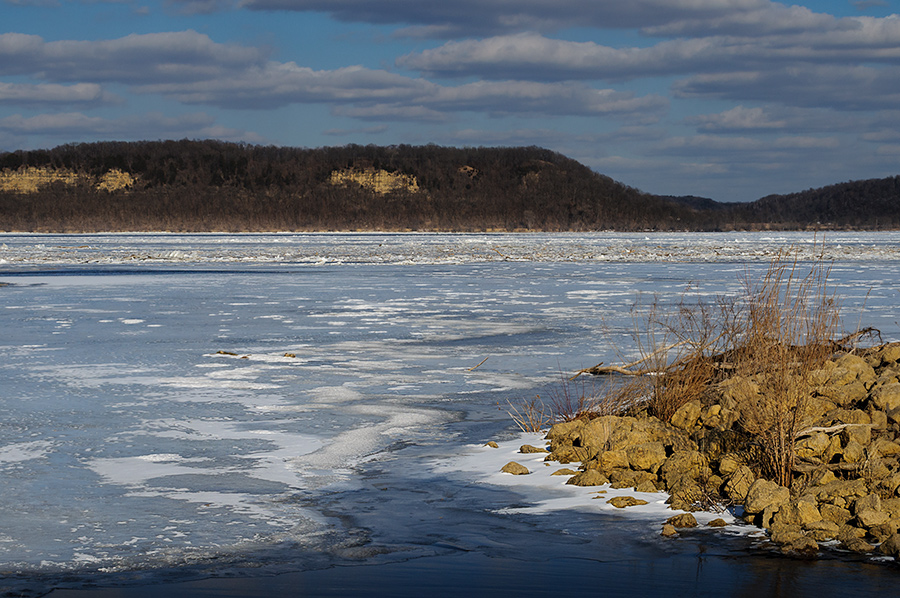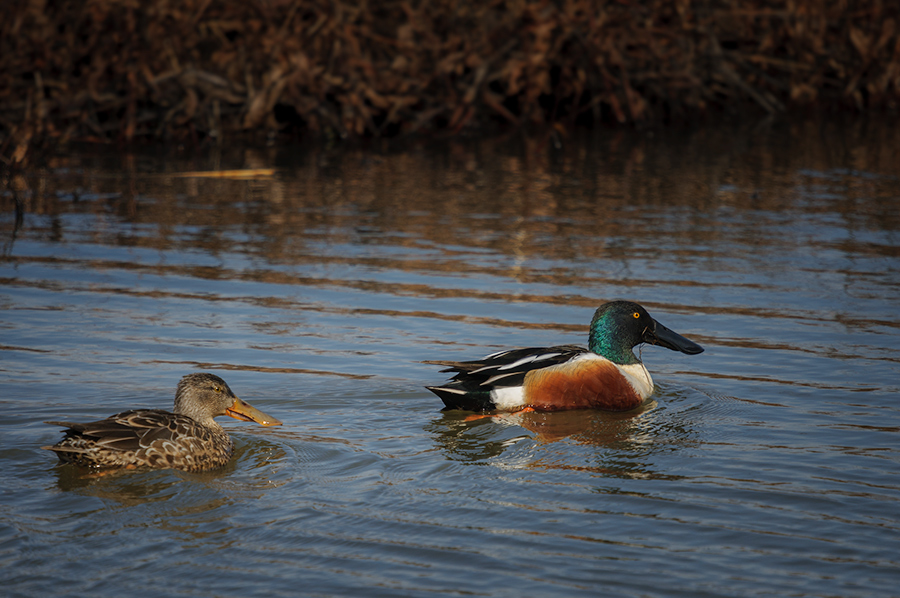
I wanted to see what’s going on along the Mississippi River between Dubuque, the Green Island Wetlands, and Sabula, Iowa this weekend and I was not disappointed. There is still some ice cover above the dams in the river, where the water is more like a big lake, but below the dams and where the river is narrow the ice is gone.
Here is a list of birds that I saw this weekend. Not all came into reach for a quality photo but I write this also for those folks who are just interested in the nature along this part of the Mississippi.
Red-tailed Hawk, Green Island Wetlands
Bald Eagles, almost everywhere along the river
Ring-billed Gulls, everywhere!
American White Pelicans, Green Island, Sabula
6 Sandhill Cranes, Green Island
Mallards, Dubuque + Green Island
Hooded Merganser, Sabula + Mud Lake Dubuque
Common Merganser, 5 males and one female at Mud Lake Dubuque (not much open water there yet but they obviously used a couple open spots to rest during their migration)
Great Blue Herons, Dubuque
Canada Geese, Green Island, many pairs everywhere,
Buffle Heads, Sabula
Great Horned Owl, Mud Lake (was near the nest again, saw still just the mother on the nest)
Horned Lark, Green Island + near Sherill, IA
American Kestrel, south of Bellevue IA
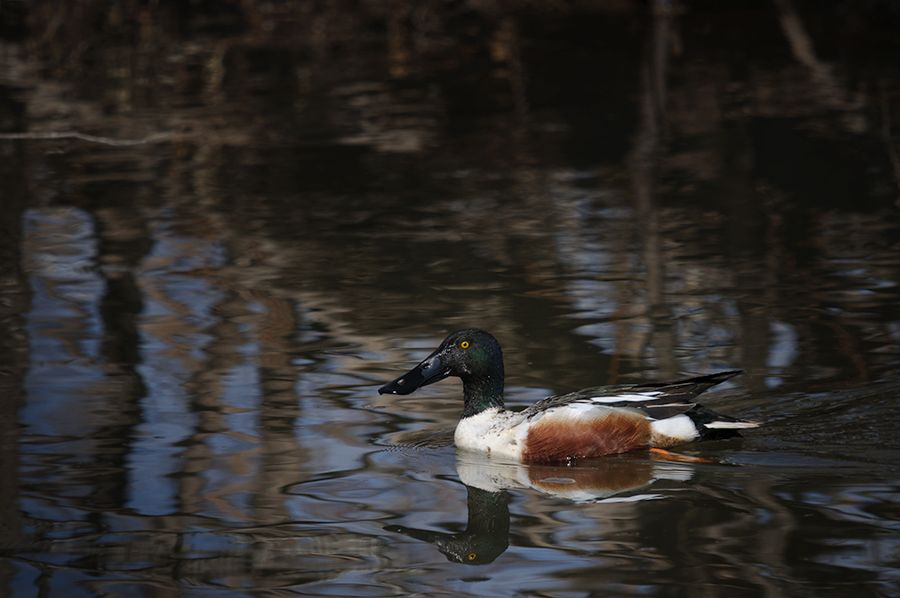
And finally I saw several pairs of Northern Shovelers in the Green Island Wetlands. This is a duck that is easy to identify, not just because of their spoon-like, oversized bill. It takes quite some patience before you can make the click. There is no way to enforce it. The best way is to drive up close, stop the car and wait until they swim towards you. Don’t make any sudden move and don't get out of the car, they will otherwise get airborne within a second. The Northern Shovelers seemed to search the company of the Canada Geese. They may feel safer in their presence.
Spring is an exciting time along the Mississippi and I always look forward to after the winter, especially after a long and cold one as the last…;-)


